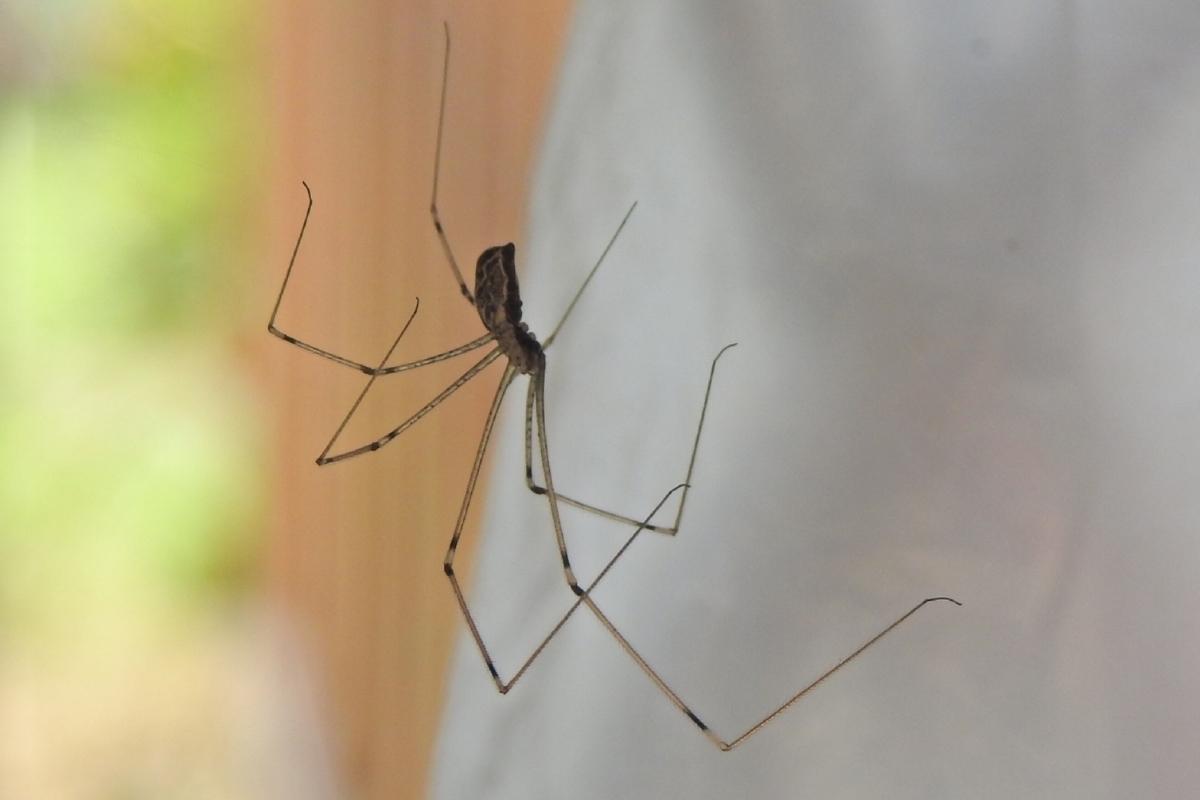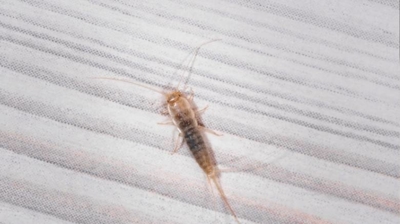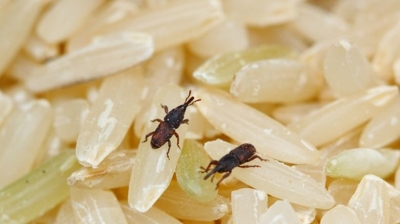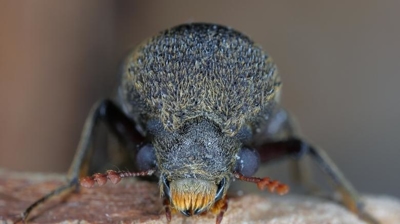
Cellar Spider Control Services

Are Cellar Spiders Harmful?
Cellar spiders, often known as Pholcidae, are generally not considered harmful in terms of direct interactions with humans. They do not bite or cause significant damage to structures or belongings. However, there are a few indirect ways in which they might be considered a nuisance or potentially harmful, depending on the context:
- Psychological Impact: For some individuals, the presence of cellar spiders can cause distress, particularly if they have a fear of spiders (arachnophobia). The webs they create can also be unsightly, especially in areas where they are abundant, such as basements, attics, or storage spaces. This could lead to a perceived "infestation," contributing to discomfort in the affected space.
- Health Concerns (Potentially): While cellar spiders are not dangerous to humans through bites (they lack the ability to penetrate human skin with their fangs), they may occasionally carry bacteria from their environment. These bacteria, if spread by contact with the spider or its webs, could theoretically pose a minor health risk, particularly in spaces where food is stored. However, the likelihood of such a health threat is minimal.
- Damage to Property: Cellar spiders spin webs in corners, crevices, and hidden areas, which might accumulate dust and debris over time. While the webs themselves do not cause direct structural damage, excessive webbing might be considered a nuisance in areas that require regular maintenance or cleaning, such as in kitchens or dining areas.
Cellar spiders are generally harmless in terms of direct physical harm to humans or structures, but they may contribute to psychological discomfort, cleanliness issues, and potential minor health risks through the indirect spread of bacteria.
Learn more: Do Cellar Spiders Bite?
Cellar Spider Control
Hiring our professional pest control for cellar spiders is generally recommended for several practical, safety, and long-term reasons:
- Accurate Identification: Cellar spiders (often called “daddy longlegs” spiders) are generally harmless to humans, but other similar-looking species may be more problematic. Our professionals can accurately identify the species and determine whether treatment is necessary. Misidentification could lead to unnecessary pesticide use or ineffective control.
- Targeted and Effective Treatment: Our professionals have access to specialized products and methods that are more effective than over-the-counter sprays. We know how to treat hidden spider habitats, such as basements, crawl spaces, and dark corners, which homeowners often miss.
- Many treatments involve residual sprays, dusts, or long-term barrier applications that prevent spiders from returning, something DIY approaches often fail to achieve.
- Integrated Pest Management (IPM) Approach: Our professionals don’t just spray—we analyze why these spiders are present. Cellar spiders feed on other insects, so a heavy infestation may indicate an underlying insect problem. Effective control often requires addressing the source of food and shelter, not just the spiders themselves. IPM strategies might include sealing entry points, reducing moisture, decluttering, and controlling other pests—creating a long-term solution rather than a temporary fix.
- Safety: Our professional pest control minimizes exposure to chemicals. While cellar spiders themselves are harmless, some pesticides used incorrectly can be toxic to humans and pets. Our trained technicians know safe application techniques and the proper chemicals for indoor use.
- Preventive Measures: Our professionals can implement preventative treatments that make your home less attractive to spiders in the future. This can include perimeter sprays, sealing gaps, and advising on moisture control—all of which reduce spider populations over time.
- Time and Peace of Mind: Cellar spiders can reproduce rapidly if conditions are favorable. Our professional intervention saves you time, reduces the chance of reinfestation, and provides peace of mind knowing the problem is being addressed comprehensively.
While cellar spiders are usually not dangerous, our professionals can handle infestations more efficiently, prevent recurrence, and ensure treatments are safe and appropriate. Especially if you have a large or persistent infestation, our professional pest control is the most effective and reliable solution.
Learn more: How To Get Rid Of Cellar Spiders
What Do Cellar Spiders Look Like?
Cellar spiders, or Pholcidae, have distinctive physical characteristics that set them apart from other spiders. Here is what cellar spiders typically look like:
- Body Size: Cellar spiders are generally small to medium-sized spiders, with their body length ranging from 2 to 10 millimeters.
- Long, Slender Legs: The most noticeable feature of cellar spiders is their exceptionally long and delicate legs. These legs can be several times the length of their body. The legs are often banded or speckled in appearance.
- Body Shape: The body of a cellar spider is elongated and cylindrical, often appearing pear-shaped with a narrow waist. The abdomen is typically more rounded, while the cephalothorax (front part of the body) is narrower.
- Coloration: Cellar spiders can vary in color, but they are commonly pale or light brown, with some species exhibiting darker markings or patterns on their bodies. Their coloration helps them blend into their surroundings.
- Spinnerets: At the rear end of their abdomen, cellar spiders have small, noticeable spinnerets that they use to produce silk for web construction.
- Web Structure: Cellar spiders build irregular, messy, three-dimensional webs that are often found in dark and secluded areas, such as cellars, basements, and corners of rooms. These webs are typically loosely constructed and serve as both hunting grounds and protective retreats.
- Behavior: When at rest, cellar spiders often hang upside down in their webs, waiting for prey to become entangled. They may shake or vibrate their bodies rapidly when threatened, creating a blurry image that helps deter potential predators.
Cellar spiders' long legs and distinctive web structures make them relatively easy to identify once you become familiar with their appearance. Despite their somewhat intimidating leg span, these spiders are harmless to humans and are more of a help than a hindrance as they control insect populations around your home.
Where Are Cellar Spiders Found?
Cellar spiders, also known as daddy longlegs spiders, can be found in various locations, often favoring dark and sheltered environments. Here are some common places where you might encounter cellar spiders:
- Cellars and Basements: As their name suggests, cellar spiders are frequently found in cellars and basements. They thrive in these dark, cool, and often damp areas, where they can build their webs to capture insects.
- Caves and Crawl Spaces: Cellar spiders are well adapted to living in natural underground environments like caves and crawl spaces. They construct webs in the corners and on the ceilings of these spaces.
- Barns and Outbuildings: In rural settings, cellar spiders can be found in barns, sheds, and other outbuildings. They help control insect populations in these areas, making them valuable for pest management.
- Residential Homes: Cellar spiders can also be found indoors, particularly in homes and buildings. They may take up residence in basements, garages, or any other secluded areas with suitable conditions.
- Attics: In some cases, cellar spiders can be found in attics, especially if they have access to the dark and undisturbed spaces within the attic.
- Outdoor Vegetation: While less common, cellar spiders may also be found outdoors in gardens, bushes, and other vegetation. They may construct webs among leaves and branches to capture flying insects.
- Dark Corners and Crevices: These spiders are known for their preference for dark, undisturbed corners and crevices. You might come across them in hidden spaces throughout your property.
Cellar spiders are not typically aggressive and are not known to pose a threat to humans. In fact, they can be beneficial as they help control insect populations by capturing and feeding on various small insects. If you encounter cellar spiders in your home and prefer not to have them indoors, gently relocating them outside can be an effective and humane way to manage their presence.
What Do Cellar Spiders Eat?
Cellar spiders, sometimes called “daddy longlegs” (though that name is also used for harvestmen), are opportunistic predators that feed primarily on small insects and other arthropods. Their diet includes:
- Flying insects: Mosquitoes, flies, and gnats are common prey.
- Other spiders: They are known to capture and eat smaller spiders, including occasionally other cellar spiders.
- Moths and ants: Small moths and ants that wander into their webs can become food.
- Other small invertebrates: Tiny beetles, springtails, or larvae that get trapped in their webs.
Cellar spiders rely on their webs to catch prey. Their long, delicate legs allow them to navigate the web and quickly wrap captured insects in silk before feeding. Interestingly, they are known for stealing prey from other spiders’ webs, a behavior called kleptoparasitism.
Cellar Spider Life Cycle
The life cycle of cellar spiders, like many spiders, consists of several stages, including egg laying, hatching, maturation, and reproduction. Here is the life cycle of cellar spiders:
- Egg Laying: Adult female cellar spiders lay eggs. They typically construct a silken egg sac, which can contain anywhere from a few dozen to several hundred eggs, depending on the species. The egg sac is usually spherical in shape and attached to a surface, often within the spider's web or in a concealed location.
- Incubation: The female spider guards the egg sac, keeping it safe from potential threats. During this incubation period, which can last a few weeks, the female may also make minor repairs to the egg sac and maintain the web.
- Hatching: When the time is right, the spiderlings (baby spiders) hatch from the eggs. Spiderlings emerge from the egg sac and are initially tiny and pale in color. They typically remain close to the egg sac and start to disperse once they are a bit more developed.
- Early Development: The spiderlings undergo several molts as they grow. They gradually increase in size and go through various instar stages. During this time, they feed on small insects and other prey caught in their mother's web, or they may resort to cannibalism if food is scarce.
- Maturation: As the spiderlings continue to grow and mature, they eventually reach the adult stage. The time it takes to reach maturity can vary based on factors like temperature, food availability, and other environmental conditions.
- Reproduction: Once they become adults, cellar spiders are capable of reproducing. Mating typically occurs when a male cellar spider finds a receptive female. After mating, the female may produce one or more egg sacs, starting the cycle anew.
- Lifespan: The lifespan of an adult cellar spider can vary depending on the species and environmental conditions. Some may live for several years, while others might have shorter lifespans. In general, cellar spiders can live for an extended period if they have access to a stable source of prey.
Cellar spiders are relatively small and are not known for their long lifespan compared to larger spider species. They are also typically solitary creatures, and adult males often do not survive long after mating. The process of egg laying and hatching, with a focus on protecting the egg sac, is a critical part of their life cycle.

Hear From Our Happy Customers
-
"Great Communication"
Tech was on time, communication was great, and he accommodated my needs.
- Alonzo W. -
"Wonderful Service"
Wonderful service. Jarvis is great. Took care of everything I needed. Thank you!
- Henry P. -
"Professional & Considerate"
I’m pleased with Miche services. Jarvis came today. Professional and considerate. Thank you!
- Judy B. -
"Very Knowledgeable"
The tech that arrived was courteous, professional, and very knowledgeable. He was Great.
- Uerial I. -
"Fantastic & Patient"
Jarvis was fantastic and patient. He answered my questions with an in-depth explanation and addressed all of my areas of concern. Would love for him to be my assigned tech going forward. Well done!
- Yonnette M. -
"Exceeds Expectations"
I can’t say enough positive things about this company... The tech that came out, Jarvis went above and beyond my expectations. Thank you guys, I will continue using your services.
- Jake M.



